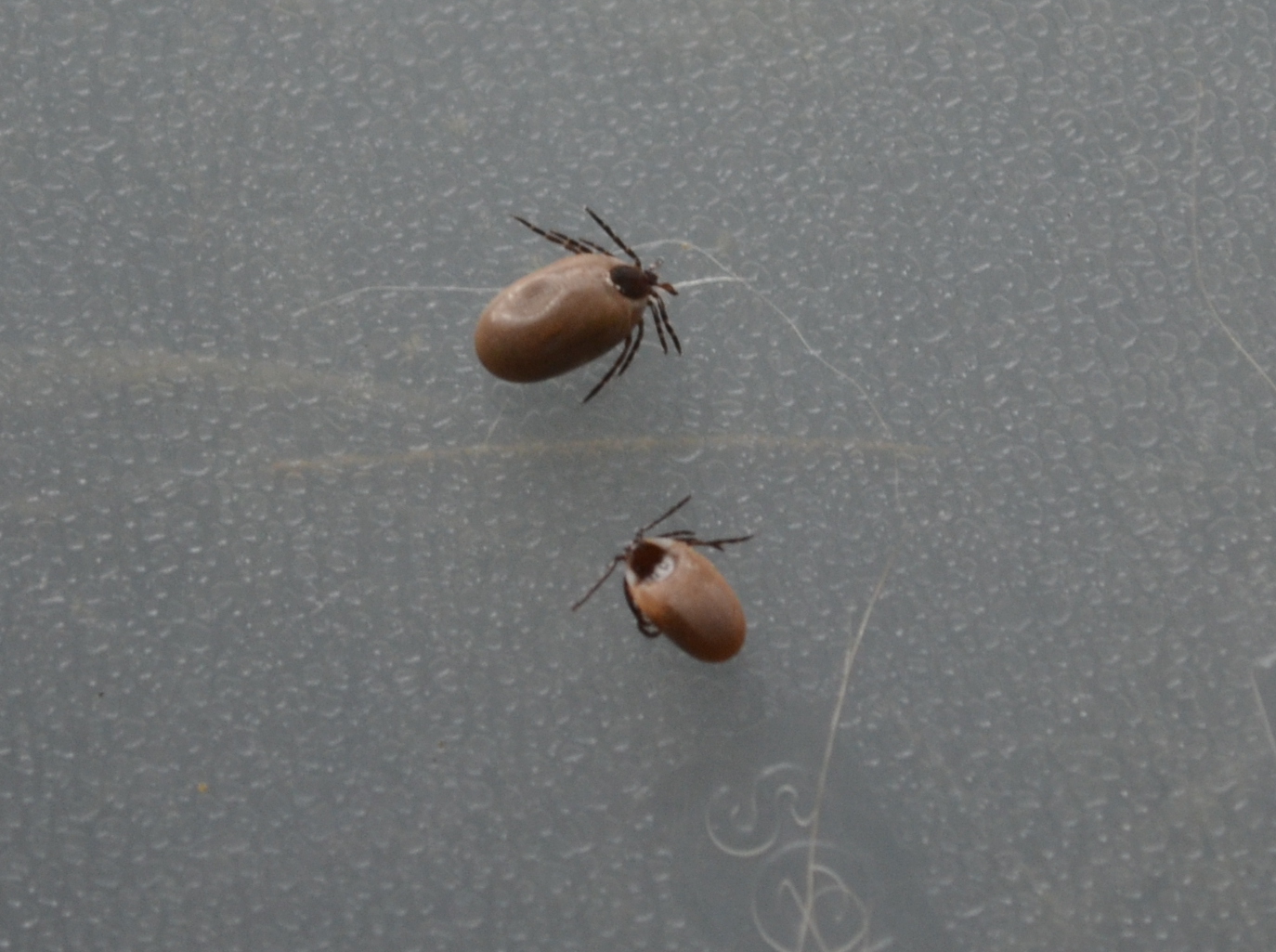While migratory birds are largely responding to a shift in day length, the emergence of hibernators and bursting of buds is more in tune with temperatures. Last weekend when the mercury jumped to the mid 60s the woods were alive. Snakes emerged from their holes, bottle flies were out mating, and female deer ticks were out looking for their first meal in months. With warmer weather later in the weeks, silver maple flowers had started to open up. We even had movement of amphibians from their overwintering grounds to their breeding grounds. This is the earliest movement recorded in the state by almost 2 weeks. While all of this is disconcerting on a number of levels, one of the most troublesome was the early activity of ticks. Deer ticks are significant parasites on many of our wild animals and early activity can make winter even more difficult for their hosts.
After a short romp in the woods last Saturday I came back and found 4 ticks on me and 5 on my dog! Over the next few days I pulled off another 4 or 5 from poor Boots. All of the ticks I found were deer ticks. Deer ticks (Ixodes scapularis) are readily identifiable by the dark brown/black scutum, or dorsal shield just behind its head. They have a red abdomen that can be slightly variable in color. Lyme disease, which is caused by the bacterium Borrelia burgdorferi, is nothing to scoff at. If the tick is a carrier and not removed within 24-48 hours after it attaches to your body, the disease can be transmitted. Early treatment with antibiotics can prevent the disease from taking root. If not caught early enough, antibiotics do not work and the symptoms () can plague someone for life. I did, however, find out that while dogs can get Lyme disease they can also recover.
As the tick feeds on your blood over the course of the week it slowly engorges. The red abdomen takes on a lighter and lighter color, ultimately becoming a pallid gray. When popped, the blood inside is dark and thick. Below are a couple of the engorged ticks that I pulled off of Boots.





